Microwave Remote Sensing of Hurricanes
AMSU-A Channels 5-8, as visualized on the UW-CIMSS AMSU Homepage during tropical storm/hurricane events,
measure the storm-related warming at different elevations within the troposphere:
Channel 8 (55.5 GHz) ~100mb (~15km)
Channel 7 (54.94 GHz) ~200mb (~12km)
Channel 6 (54.46 GHz) ~350mb (~10km)
Channel 5 (53.6 GHz) ~550mb (~5km)
As storms mature and the circulation/associated convection become more organized, the amount of microwave radiation
emitted by the atmosphere towards the AMSU-A instrument increases as tropospheric temperatures (again, as a
result of storm-related subsidence/warming) increase. The exception occurs in cases where ice/liquid water droplets
reduces the upwelling radiation due to the effects of scattering (commonly seen in AMSU-A Channel 5).
In a qualitative sense, the larger spatial coverage and magnitude of storm-related
warming observed by AMSU-A corresponds to increasing storm intensity/reduced mean sea level pressure (MSLP) as
seen in recent AMSU-A time-series of Hurricanes.
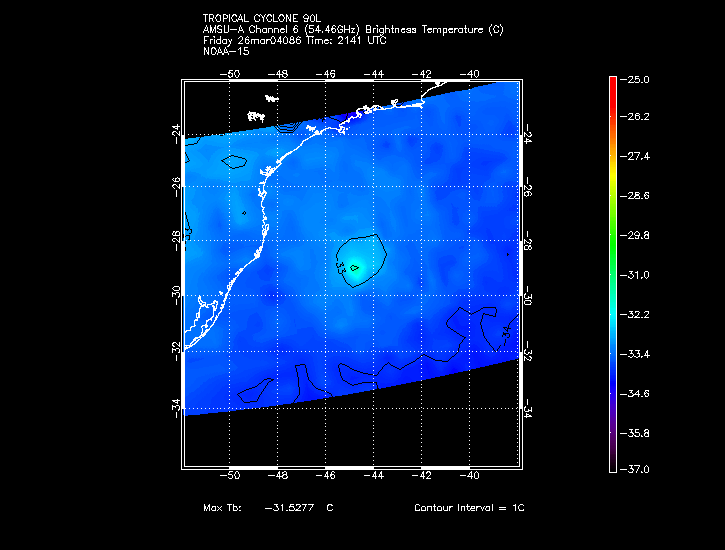
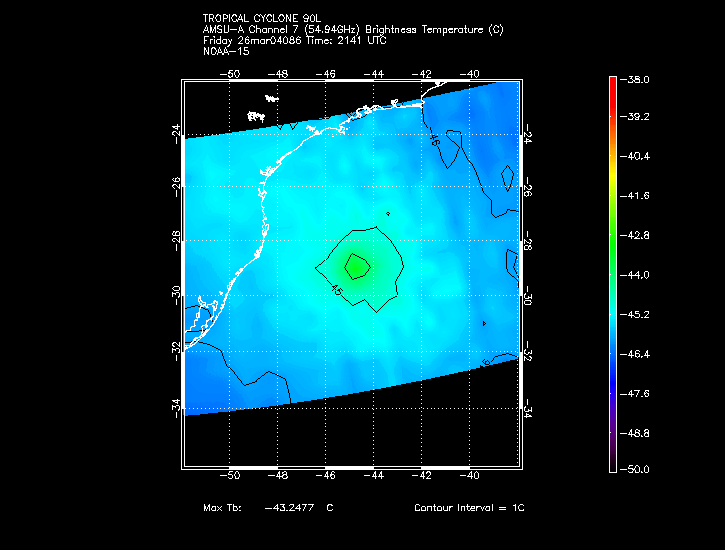
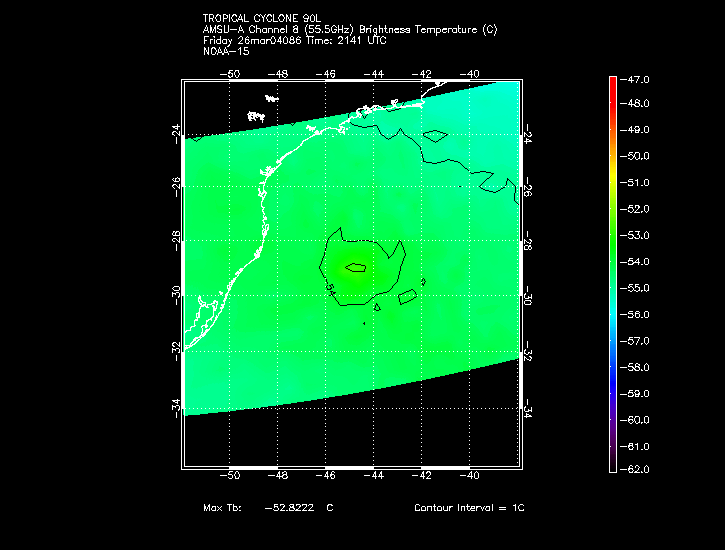
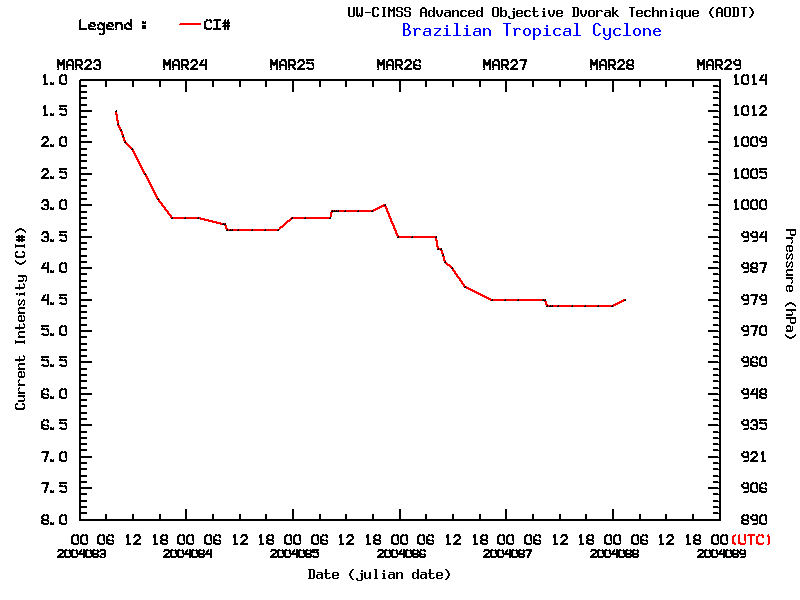
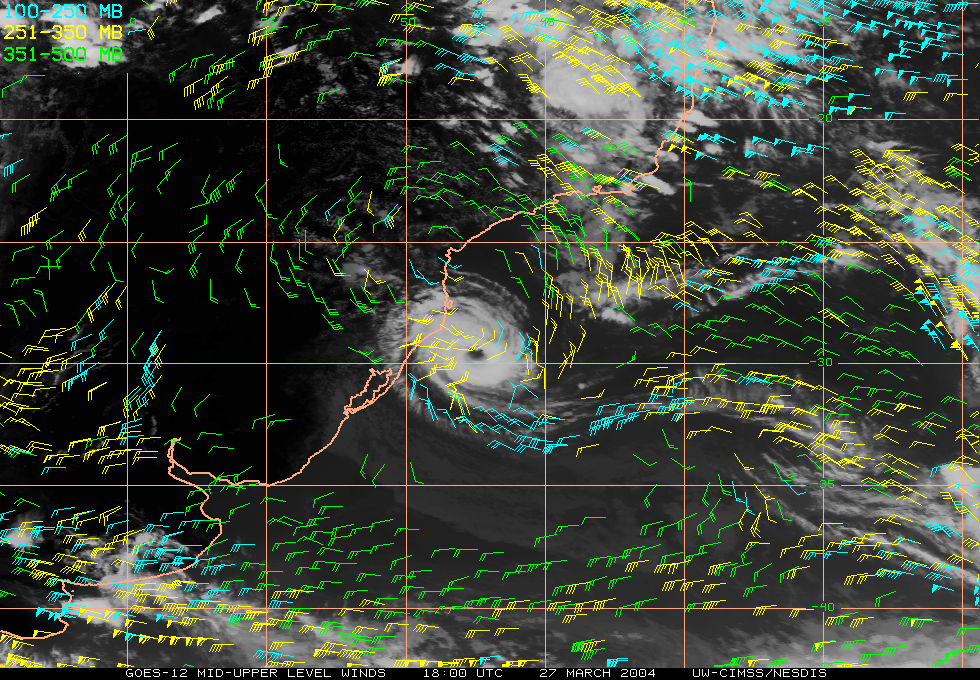
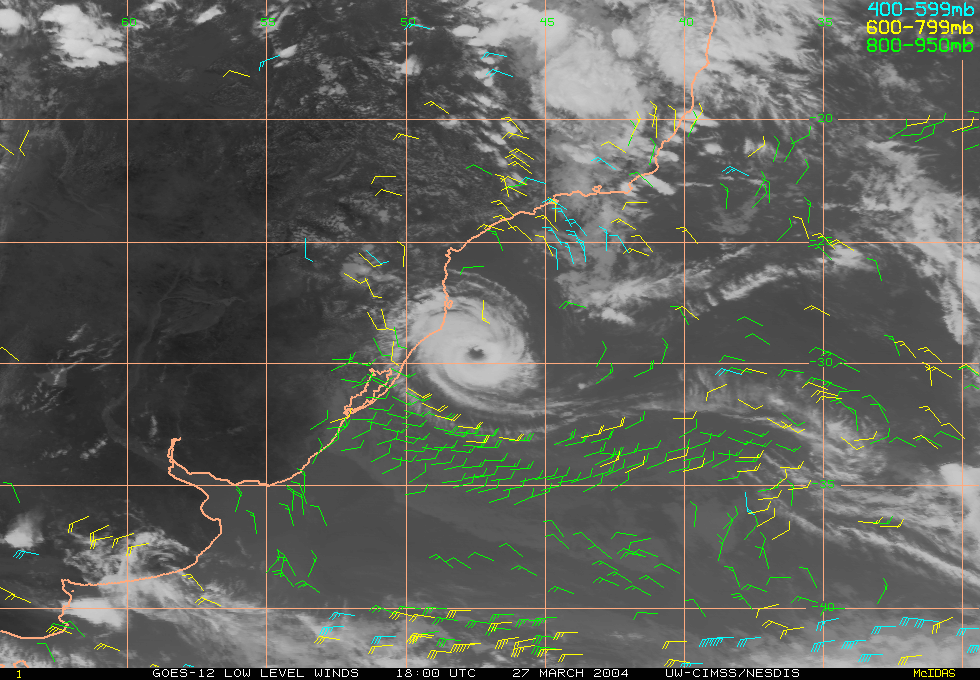 See the CIMSS tropical page for more satellite imagery.
See the CIMSS tropical page for more satellite imagery.
Return to Lesson 12
Return to Satellite Meteorology Main Page
CIMSS AMSU page
| 


